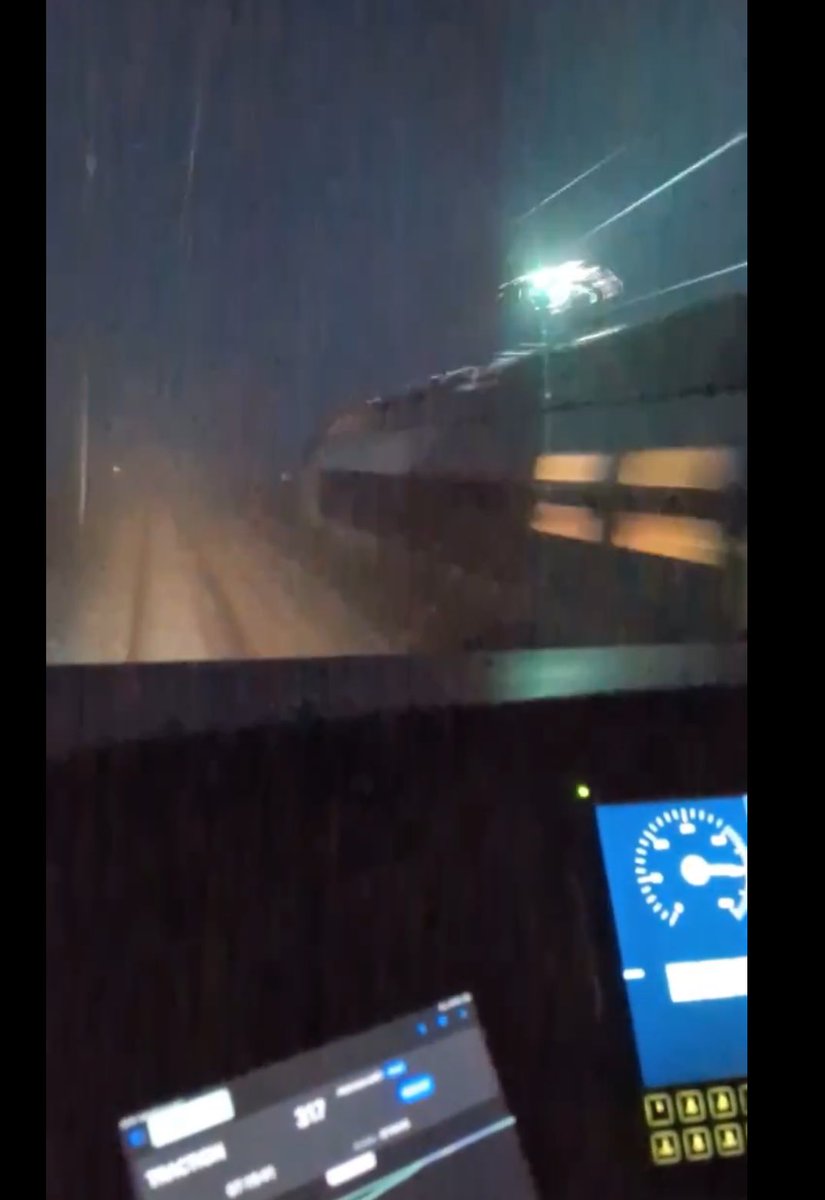There used to be a station at the bottom of the Eiffel Tower.
Huge: 20 tracks, 10 platforms, able of accommodating thousands of passengers.
And this is not a fake.
Thread History⤵️
Huge: 20 tracks, 10 platforms, able of accommodating thousands of passengers.
And this is not a fake.
Thread History⤵️

The adventure began in 1867.
The city of Paris is organizing its first Universal Exhibition.
On the current "Champs de Mars".
At the time no Eiffel Tower, that will come later.
The city of Paris is organizing its first Universal Exhibition.
On the current "Champs de Mars".
At the time no Eiffel Tower, that will come later.

It lasts 7 months and 6.8 million visitors will flock there to see the latest inventions from all over the world. 

But at the time, transportation was roughly limited to 3 things.
Walking, horse and train.
And almost 7 million visitors, that makes many horses.
So there was a need for a train, and therefore a railway line.

Walking, horse and train.
And almost 7 million visitors, that makes many horses.
So there was a need for a train, and therefore a railway line.


The train is good, it can carry a lot of people all at once.
Today we call it "Mass Transit". We didn't invent anything.
Today we call it "Mass Transit". We didn't invent anything.
We are therefore going to build a station (a small one to start with 4 tracks at the platform), near the exhibition.
To do this, we are going to divert a railway line from Grenelle station on the "Small Belt" (
a circular line that goes around Paris), to "Champs de Mars".

To do this, we are going to divert a railway line from Grenelle station on the "Small Belt" (
a circular line that goes around Paris), to "Champs de Mars".


It is seen here in this drawing from the period.
This is destroyed at the end of the exhibition.
End of the story? Not really.
This is destroyed at the end of the exhibition.
End of the story? Not really.

In 1878, Paris again hosted the Universal Exhibition.
And always at the Champs de Mars.
Bigger, more beautiful, stronger, we need a station again.
And always at the Champs de Mars.
Bigger, more beautiful, stronger, we need a station again.

We are therefore going to build a more beautiful one, with a renowned architect. It is "Mr Juste Lisch" who is in charge of the plans, a metal structure filled with bricks with large windows.
But still 4 lanes at the quayside.
And + 5 for goods.
But still 4 lanes at the quayside.
And + 5 for goods.

Still no Eiffel Tower at the exhibition, but visitors can see the head of a soon-to-be-famous statue as well.
#Freedom
#Freedom

Lisch station is not completely dismantled by the end of the exhibition. We keep it for ... the 1889 exhibition.
The third !
We put that back?
The third !
We put that back?

And yes, look closely, what can we see in front of the nascent tower? Lisch station. Always present. 

Besides, it's good that there is the train, because much of the steel that makes up the Eiffel Tower was delivered by rail. 



We even take the opportunity to connect Champs de Mars station to "Saint Lazare Station" via the Moulineaux line and a brand new bridge.
Slightly curving.
Still used today!
Slightly curving.
Still used today!

In 1897, the Lisch station was dismantled, and it was rebuilt between "Asnières" and "Bois Collombe". (Paris suburbs)
It is still theoretically being restored there.
It is still theoretically being restored there.

Because the railway must continue, along the Seine, towards a new and immense terminal station.
"Invalides Station" exactly in center of Paris.


"Invalides Station" exactly in center of Paris.



In 1900, a new Universal Exhibition. The fourth.
And there we can see very very large transport side.
10 platforms, 20 lanes. Just that !
There's even a locomotive depot.
This is needed for the 48 million visitors who will be flocking there !

And there we can see very very large transport side.
10 platforms, 20 lanes. Just that !
There's even a locomotive depot.
This is needed for the 48 million visitors who will be flocking there !


This photo alone gives an idea of the size of the station.
I repeat, there is no special trick.
One of the most beautiful pages in the history of the City of Light.
I repeat, there is no special trick.
One of the most beautiful pages in the history of the City of Light.

After 1900, the tracks were transformed into a freight station. Passenger traffic runs along the Seine as far as Orsay. There is still a stop in front of the Tower.
Since the Eiffel Tower in 1935 it looks like this.
Since the Eiffel Tower in 1935 it looks like this.

The main traffic is for coal, which at the time was widely used for heating and industries in Paris. 



Then with the drop in coal traffic, it became a railcar depot until 1971.
Today we can see the land left free by the rights-of-way.
A soccer field, the Australian Embassy and ... UIC, the International Union of Railways.

Today we can see the land left free by the rights-of-way.
A soccer field, the Australian Embassy and ... UIC, the International Union of Railways.


The next time you step on the Eiffel Tower, you may be able to hear a train whistling in the distance.
And you will think of the millions of visitors who before you came by train to climb the most beautiful monument in the world.

And you will think of the millions of visitors who before you came by train to climb the most beautiful monument in the world.


Other thread here (in french)
bb27000.lo.gs
bb27000.lo.gs
• • •
Missing some Tweet in this thread? You can try to
force a refresh













